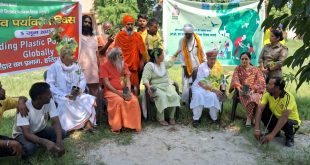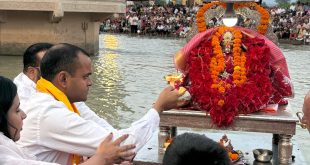Cyclonic storm ‘Mocha’: The Indian Meteorological Institute has predicted cyclonic storm ‘Mocha‘(Mocha,) to hit the southeast Bay of Bengal on 6 May 2023. Earlier, many international meteorologists had predicted its arrival in the second week of May. The IMD has given this report while studying the reports of the US weather forecast model Global Forecast System and the European Center for Medium-Range Weather Forecasts. Here the question arises that how are cyclonic storms named? Who gives him this name?
It is expected that the impact of cyclone Mocha will extend from eastern India to Bangladesh and Myanmar. Yemen was to name the first cyclone of the year. Therefore, Yemen had suggested naming the severe cyclone that hit the Bay of Bengal on May 6 after Mocha, a port city on its Red Sea coast. Let us tell you that the word cyclone is derived from the Greek word, which means ‘coil of snake’. It is formed by atmospheric disturbances around a low pressure area which produces violent storms and severe weather.
There are two systems of naming cyclones. Under the first, the names of cyclones around the world are kept. On the other hand, under the second system, the names of the cyclones arising in the Arabian Sea and the Bay of Bengal are kept. Regional Specialized Meteorological Centers and Tropical Cyclone Warning Centers give names to cyclones that form in any oceanic basin around the world. IMD is also included in the same 6 regional specialized meteorological centers in the world. IMD names cyclones that form in the North Indian Ocean.
A special name is given only when the speed of the cyclone is more than 34 knots per hour. If the speed of a storm reaches 74 mph, it is considered a hurricane, cyclone or typhoon. 13 countries of this region name the cyclones that form in the Bay of Bengal and the Arabian Sea. The group naming cyclones formed in this region includes Bangladesh, India, Maldives, Myanmar, Oman, Pakistan, Sri Lanka, Thailand. At the same time, Iran, Qatar, Saudi Arabia, UAE and Yemen name the cyclones formed in the Arabian Sea and Bay of Bengal.
The countries involved in the naming group of cyclones give names in alphabetical order. As Bangladesh comes first, he will suggest the name first. After this India and then Iran will be named. A list is made by taking names from the countries included in the group for the next 25 years. Out of these names, names are kept in alphabetical order. The names given by the countries in the new list include Gati, Tej, Murasu, Aag, Neer, Prabhanjan, Ghurni, Ambud, Jaladhi and Veg. It is believed that at least 5 cyclones will come every year.
Countries in the northern Indian Ocean began using a new system for naming tropical cyclones in 2000. These names are listed alphabetically and gender neutral by country. The general rule is that the name list is proposed by the national meteorological and hydrological services of the WMO members of a specific region. These are approved by the concerned tropical cyclone regional bodies in annual and biennial sessions.
 Indian Thought Latest News & Views
Indian Thought Latest News & Views


